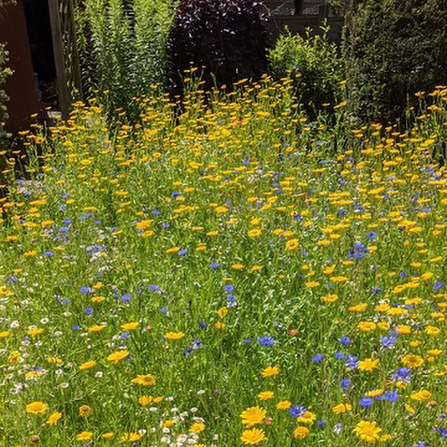However, with a craze of new ideas and opinions, trying to live a more sustainable lifestyle can seem a lot more confusing than it really is. Once you overcome the greenwashing and common myths about sustainability, it is quite easy to implement small changes in your everyday life!
Take public transport to school
In the 2014 National Travel Survey, it was found that 23% of students aged 11-16 still travel to school by car, which hasn’t decreased since 2003. If we consider the average school travel distance to be 3.4 miles, driving to and from school in a diesel car everyday releases 0.416 tonnes of CO2 annually- just on school rides alone!
Taking the bus, train or tram is a far more sustainable option if you are travelling long distance because they transport a lot more people, meaning less CO2 is emitted per person. Another option is walking or cycling, which also have the benefit of exercise and enjoying the outdoors. There are many safe cycling routes available, and you can use apps like Cyclestreets to plan your route and Rain Alarm to check the forecast beforehand.
Reduce food waste at lunch
Many people bring their own lunch into school, but don’t take into consideration the large amount of waste produced from packaging. Consider choosing reusable containers like a thermos container, plastic tupperware (can be reused from old takeaway), bento boxes or if you do buy pre-packaged choosing recycled, compostable packaging. As well as this, you can reduce the amount of packaging inside your lunch box too. Use dividers or beeswax wraps to separate and keep food fresh instead of single-use plastics and foils. The next time you buy snacks, instead of buying individually packaged portion sizes, you could buy the full-size option and split it into portions yourself across the school week (this is usually cheaper too!).
Also think about what kind of food you are buying. Try and find a plant-based alternative to meat/fish as the carbon footprint of producing meat is very high. You can also check labels of produce to see where it is grown and try to find locally grown and seasonal vegetables. You might be surprised at how much food is grown elsewhere- the UK imports 45% of its vegetables and 84% of its fruits from abroad.
Reduce your digital footprint
A lot of us spend probably a bit too much time on our phone, which seems harmless but can detriment the environment too. By streaming and scrolling, we are using up valuable (and expensive) energy.
An easy way to reduce consumption is by simply turning off your phone and laptop a bit more. But it is understandable that with studying, social media and keeping connected to others this is becoming increasingly difficult to do. However, it is very easy to delete and unsubscribe from emails, as keeping them stored uses a lot of power. If every person deleted only 10 emails it would save 55.2 million kilowatts of power! This and the added benefit of having a cleaner and more manageable inbox. As well as this, repairing, cleaning, and updating devices increases their efficiency, which reduces their energy consumption. So remember to update your apps, fix a cracked screen or broken speaker instead of buying a new appliance and make sure to clean up your phone storage!
Think before you buy
It is very easy to get caught up in the whirlwind that is fast fashion especially when trying to keep up with the latest trends. However, it is important to take a second before buying something. Take 3 key things into consideration:
- Do I have an alternative to this item already?
- Can I buy this locally or second-hand for a better price?
- Is the amount I will use this worth the price?
After taking these things into consideration, you can easily apply the 30 day rule, which means instead of buying immediately, add the item to a wish list and wait for 30 days. If after 30 days you still want the item, buy it! Using these methods is a lot more sustainable because it promotes thinking about the cost of fashion and prevents buying things you won’t use, as the average number of times clothing is worn has decreased by 36% in only 15 years.
There are also many ways to upcycle and DIY old clothing instead of buying new, for example plenty of videos can be found on Tiktok and YouTube. You can hem waistlines, crop tops, and customise trainers.
Go green in your spare time
Many activities can really help your local environment flourish. If you have a garden or local green space available, try your hand at planting some native species like British wildflowers: eye daisies, cornflowers, marigolds, knapweeds, and primroses. This requires a bit of effort but has wonderful results, as wildflowers attract pollinators like bees and butterflies. It is especially important to grow pollinator friendly plants because over 250 insect pollinators are in danger of extinction in Britain!!



